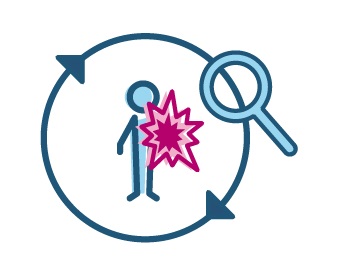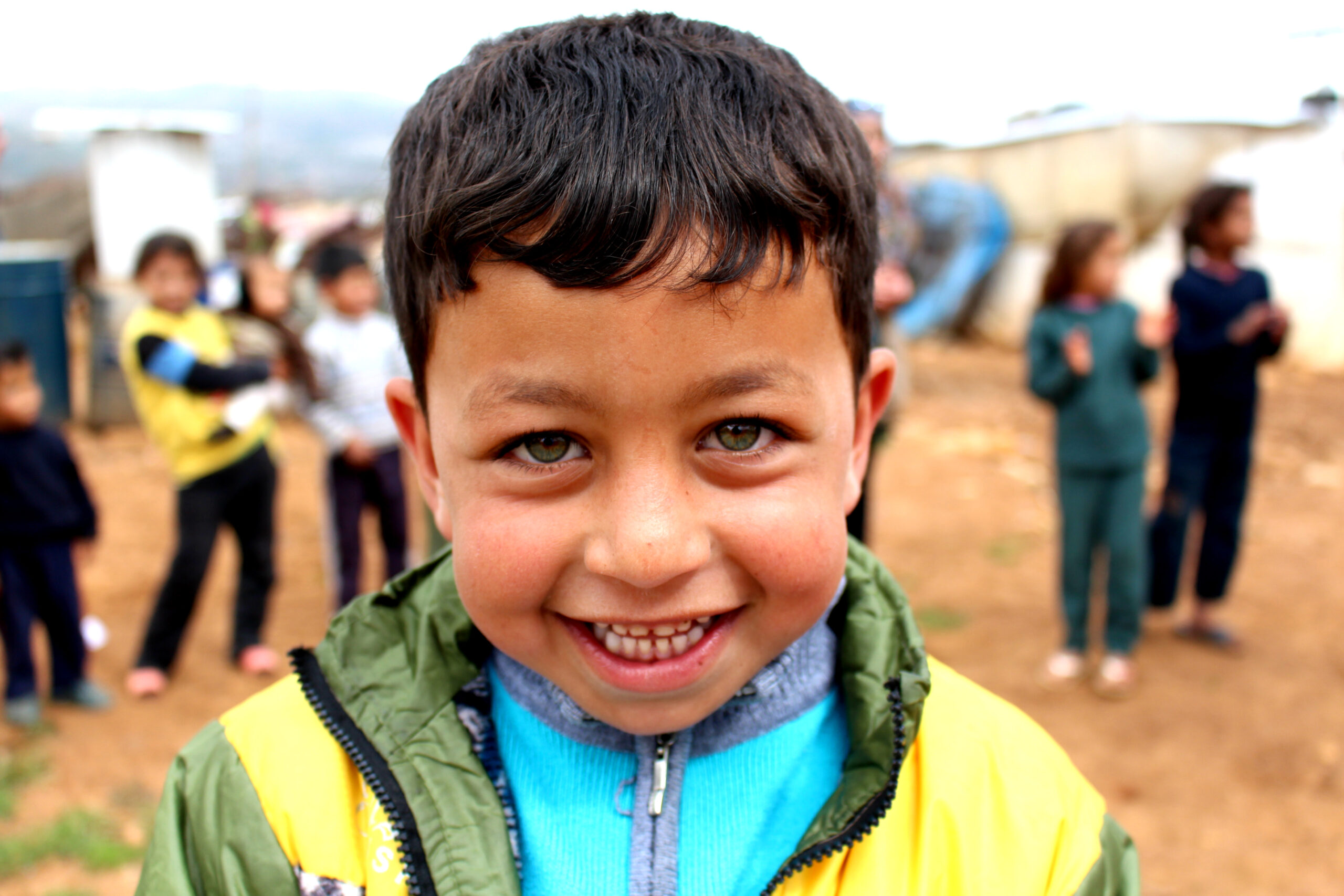
Since its first community-based protection (CBP) programs in West Timor, the Philippines, and Colombia in the early 2000s and its flagship program in the Democratic Republic of Congo (DRC) in 2006, Oxfam has developed a strong evidence base demonstrating the benefits of using a community-based approach to protection. By drawing on existing community capacities, CBP approaches are often powerful and effective means of emergency response—whether by carrying a child to safety, negotiating at a checkpoint to allow civilians to pass, organizing the sharing of food and other resources if supplies have been cut off, or helping neighbors hide from armed gangs. CBP approaches also offer valuable foundations for promoting active citizenship and good governance and contributing to longer-term goals of gender equality and women’s rights.

From 2020 – 2021, Oxfam undertook an in-depth co-creation process with community volunteers and partner organizations including African Women and Youth Action for Development (AWYAD), Azul Positivo, Candlelight, Centre de Développement Intégral de l’Enfant Rural (CEDIER), Fundación Mujer y Futuro (FMF), Groupe d’Associations de Défense des Droits de l’Homme et de la Paix (GADHOP), KAALO Aid and Development (KAALO), Solidarité pour la Promotion Sociale et la Paix (SOPROP) and Utopia to develop a comprehensive toolkit called “From Participation to Leadership: A Resource Pack on Community-Based Protection,” which provides practitioner-oriented guidance and tools for facilitating activities throughout the CBP programming cycle, including (1) Analysis and Planning, (2) Mobilization, (3) Response, and (4) Evaluation, complemented by ongoing Support and Empowerment to community-based protection structures (CPSs). The toolkit also shares experiences directly from protection volunteers and members of CPSs, as well as staff from Oxfam and its partner organizations of what CBP can look like around the world.
Since 2013, Oxfam has applied these CBP approaches to its humanitarian programming in Lebanon. Throughout each phase of the CBP cycle, Oxfam and its partner, Utopia for Social Justice, have harnessed the tools and processes outlined in the toolkit to implement effective CBP programming as showcased in the case studies and examples by Suha Allouche Hafda, Lara AlBekai, Rita Saade, Nour Shawaf and protection teams from Utopia and Oxfam in Lebanon contained in the toolkit.
Power marks the distinction between community-informed protection and community-based protection … The distinguishing feature of community self-protection is that communities have the most power over protection responses and thus the leading role in them.
From Participation to Leadership: A Resource Park on Community-Based Protection
 Starting in 2013, Oxfam and Utopia supported the establishment of community focal points and then in 2015 the establishment of peer groups as a form of CPSs comprised of Syrian and Palestinian refugees with Lebanese host communities in urban areas and informal settlements in the Bekaa (without Utopia) and Tripoli (with Utopia) areas of Lebanon. These ‘peer groups’ were intended to conduct locally driven identification of and response to protection threats. Dedicated women’s groups in refugee communities established a separate safe space for women’s solidarity and capacity strengthening. Oxfam also facilitated a participatory process within each community for the selection of local protection focal points, who received specialized technical training and were empowered to mobilize the CPSs and coordinate their ongoing analysis, sensitization, and referral activities. To enhance the technical knowledge of CPSs to identify, prioritize, and mitigate protection threats, Oxfam provided them with basic training on humanitarian protection, community participation methods, facilitation and mediation skills, and local-level advocacy. Oxfam and Utopia also conducted structured monthly meetings as an opportunity to offer peer-to-peer support and discuss challenges, needs, potential mitigation measures, and solutions to protection concerns with CPS members.
Starting in 2013, Oxfam and Utopia supported the establishment of community focal points and then in 2015 the establishment of peer groups as a form of CPSs comprised of Syrian and Palestinian refugees with Lebanese host communities in urban areas and informal settlements in the Bekaa (without Utopia) and Tripoli (with Utopia) areas of Lebanon. These ‘peer groups’ were intended to conduct locally driven identification of and response to protection threats. Dedicated women’s groups in refugee communities established a separate safe space for women’s solidarity and capacity strengthening. Oxfam also facilitated a participatory process within each community for the selection of local protection focal points, who received specialized technical training and were empowered to mobilize the CPSs and coordinate their ongoing analysis, sensitization, and referral activities. To enhance the technical knowledge of CPSs to identify, prioritize, and mitigate protection threats, Oxfam provided them with basic training on humanitarian protection, community participation methods, facilitation and mediation skills, and local-level advocacy. Oxfam and Utopia also conducted structured monthly meetings as an opportunity to offer peer-to-peer support and discuss challenges, needs, potential mitigation measures, and solutions to protection concerns with CPS members.
Mobilization: Community-based protection structures serve as a catalyst for collective action, in which community members are mobilized to bring their capacities together and devise their own self-protection strategies. Where possible, organizations should aim to work with existing local structures.
One of the first activities of the CPS in Bekaa was a protection risk analysis. The CPSs in three locations identified the harassment of women going to latrines at night as a priority risk due to the lack of lighting. Communities also reported that the lack of lighting prevented families from going outside at night since they had seen strangers stealing livestock and motorbikes belonging to refugees. The community had initially purchased candles but found that this was not an affordable solution and had resulted in fire damage to several tents. After consulting the wider community, the CPS designed action plans for a lighting project. In one site, they opted to install an electrical generator, identifying a local technician to complete the work, while Oxfam procured the generator. The CPS agreed to share fuel and maintenance expenses among local households. At another site, the CPS decided to distribute rechargeable, solar-powered lamps to each household to avoid ongoing generator maintenance costs. The lamps allowed women and children to feel safer when accessing the latrines at night or going out for other necessities.
Analysis: Community-based risk analysis guides CPSs and humanitarian organizations in mapping protection risks faced by communities. This process informs community action planning and serves as the basis for the relationship between organizations and CPSs, ensuring that they have a common understanding of the community’s reality.
Response: Community action planning includes:
1.) prioritization of protection risks,
2.) identification of response actions,
3.) stakeholder mapping,
4.) analysis of potential risks,
5.) practical planning, and
6.) presentation of the plan to community members, and where relevant, local authorities.
CPSs in Tripoli were also involved in a comprehensive service mapping process. Although Utopia had initially provided existing service maps of humanitarian organizations, the CPSs noted that they could not fully access many of the providers listed due to the presence of army checkpoints, high transportation costs, and lack of legal residency permits for many Syrian refugees. Instead, they explained that community members tended to prefer nearby services, despite their limitations. To address this gap, Utopia provided training to CPSs on how to update existing service maps, and communication and transportation allowances to conduct the service mapping. The CPSs subsequently collected information on local providers such as dispensaries, private clinics, schools, community-based organizations, and independent individuals. Since this experience, Utopia has continued to rely on the CPSs to update service maps as the best approach to ensure that they are tailored to local needs.
In advance of a donor conference in 2017, Oxfam and Utopia sought to undertake research on the dangers that Syrian refugees faced when fleeing to Lebanon. However, during initial consultations with the CPSs, the members suggested that they would prefer to focus the research on solutions for the future. The process was adapted to a participatory research model where the CPSs served as the core research team involved in designing research tools, conducting data collection, and refining recommendations for the final report. The research inspired the CPSs to advocate directly to decision-makers at the national level, conducting a lobbying tour and designing an accompanying photographic exhibit to bring their stories to life. Although administrative barriers prevented the CPS members from attending the global donor conference, they spearheaded the drafting of Oxfam’s talking points to ensure that their voices were central in the event.
Analysis: Community-led service mapping enables the identification of protection and emergency services that can be accessed by communities to address protection needs. The process may include an analysis of the barriers to accessing services, which can further inform referrals, sensitization, and advocacy activities by CPSs.
Support: Activities aimed at supporting CPSs can take many forms, including joint planning and implementation; coaching and mentoring; training sessions; convening people and brokering relationships; and material support.
Response: Community-led protection advocacy aims to influence decision makers to change policies, practices, and behaviors that impact protection risks. Community members, including CPSs, have an important role to play in advocating for their own protection needs.
For more guidance, tools, and case studies, you can access Oxfam’s complete resource pack at:
READ MORE EXECUTIVE SUMMARYSign-up
"*" indicates required fields
